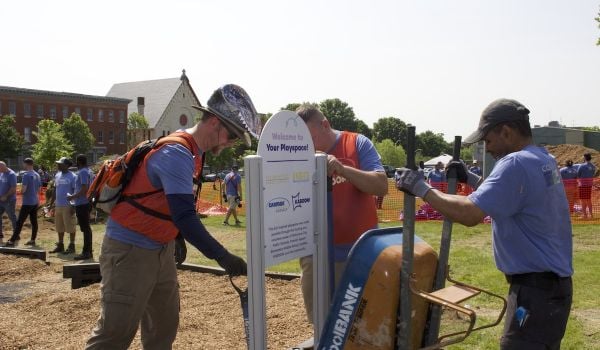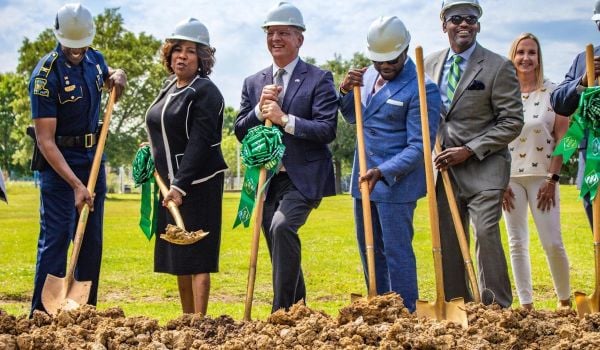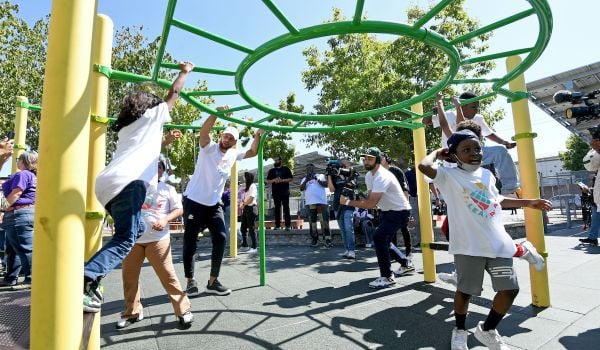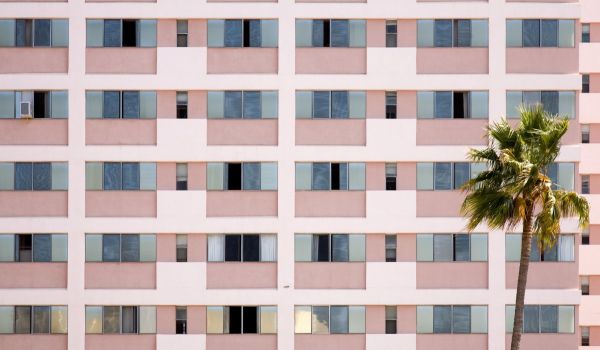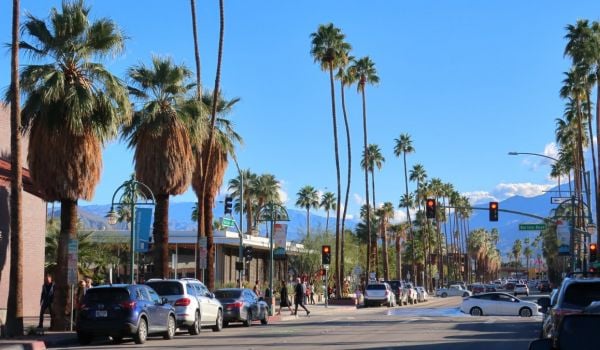By July 2023, a dull, grassy, underused lot on Kornblum Avenue in Hawthorne, California, is slated to become the city’s newest vibrant community park. The Zela Davis Park Renovation Project is the latest in a master plan to update a number of Hawthorne’s parks, narrowing the park equity gap and improving quality of life for Hawthorne residents. The project is moving forward after receiving $3.4 million in funding from the Clean California Local Grant Program earlier this year.
“Hawthorne is an extremely park-poor community,” says Tori Kjer, executive director at the Los Angeles Neighborhood Land Trust, a park equity and advocacy nonprofit. Home to about 90,000 people, 60% of Hawthorne residents are people of color. Those residents have access to only 0.6 park acres per 1,000 residents, well below the already subpar Los Angeles County average of 3.3 acres per 1,000 people. About 90% of Hawthorne’s communities are also classified as “disadvantaged” according to California’s Planning for Healthy Communities Act, meaning they are disproportionately affected by the burdens of environmental issues such as air pollution, which could be mitigated through increased access to green space.
The park equity gap experienced by Hawthorne residents mirrors problems nationwide. Data from the Trust for Public Land shows that in the 100 most populated U.S. cities, majority-nonwhite communities have access to 44% less park acreage than majority-white communities. Low-income neighborhoods have access to 42% less park acreage than high-income communities. In southwest Los Angeles County, Hawthorne residents know these discrepancies well.
In Hawthorne, the Zela Davis project is the second step in a master plan to update nine city parks, according to Kwyanna Bowie, recreation supervisor at the City of Hawthorne, whose team is leading the charge on the renovation projects.
Hawthorne’s Bicentennial Park was already renovated in 2017 through a partnership with the Trust for Public Land. Before the renovation, ill-maintained and unused tennis courts took up most of the space at the park. “They were remnant infrastructure that had fallen into disrepair, and thus, the park was gated, locked and not accessible,” explains Robin Mark, L.A.-based program director at the Trust for Public Land. Now that it has been renovated, Bicentennial Park boasts a splash pad, picnic area, playground, basketball shooting court and more green space for picnicking and play.
The vision for Zela Davis Park is similar. The city selected it for renovation after conducting a survey, which found it “was one of [Hawthorne’s] most underserved facilities,” explains Von Norris, city manager and director of community services for the City of Hawthorne. The park is located “in a very high-density area without green space,” says Norris. The existing space has no bathrooms and limited amenities, including an out-of-date tot lot and a single picnic table.
Park renovations are effective and economical in cities like Hawthorne, where urban space is dense, and land for new parks is scarce. “Park renovations are an excellent way to serve the existing community,” Mark says. Because apartment buildings and multi-family housing units surround Bicentennial and Zela Davis Parks, tens of thousands are served through their renovation. The Trust for Public Land estimates that about 20,000 people live within a 10-minute walk of the renovated Bicentennial Park. Zela Davis is also near two schools, meaning it will serve a large community of families with school-aged children after renovation.
With the Zela Davis project, the City of Hawthorne reached out to the Los Angeles Neighborhood Land Trust to collaborate on the project beginning in 2019. The organization then took responsibility for managing engagement, seeking grant funding and designing the park.
When it came to the latter, community input played a key role. “When communities are included in the design process of neighborhood parks, it ensures that the completed project will reflect the needs of that community and serve residents,” Mark says.
The Los Angeles Neighborhood Land Trust and other nonprofit partners engaged in social media outreach and held meetings and tabling sessions at local parks and schools. “We were able to ask people what they would like to see there, what they want in their park, and what are the priorities for them,” Kjer says.
After soliciting input, the Los Angeles Neighborhood Land Trust developed six concept designs for the renovated Zela Davis Park which community members voted on. The winning design includes a large playground, basketball hoops, walking paths and green areas planted with native species and shade trees. New amenities like bathrooms and park benches are also on the agenda. Kjer says the updates will turn what is now only an empty grassy area into a “vibrant, usable public space.”
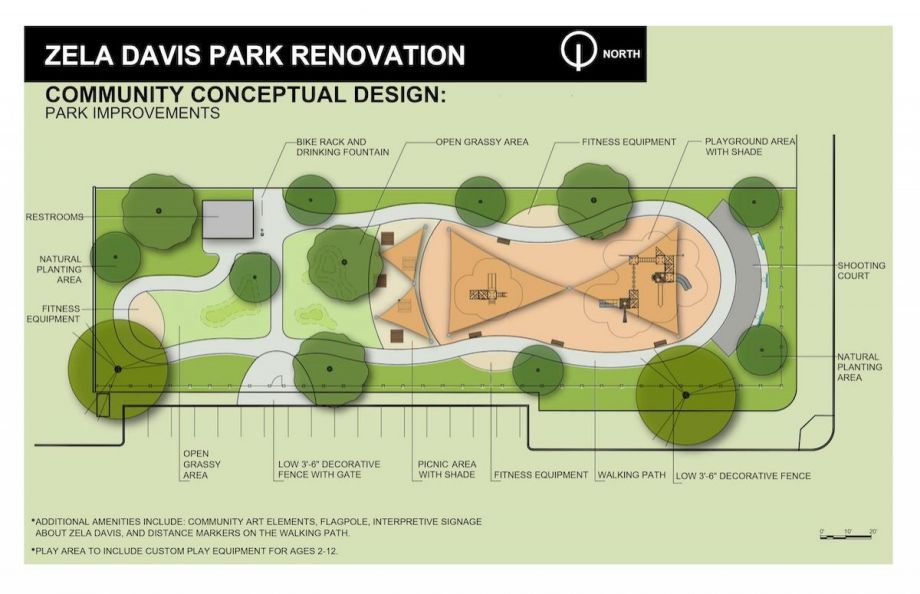
The Zela Davis park concept (Courtesy of Los Angeles Neighborhood Land Trust)
It took four rounds of grant applications over three years before the Zela Davis Park project received enough funding to move forward. Besides funding from the Clean California local grant program, the project also received $650,000 from Los Angeles County. Teams will break ground on the project in June.
Meanwhile, Bowie says Hawthorne’s master plan for park renovations is moving forward at other sites. Planning is already underway for renovations at Holly Park and Ramona Park with funding from the Los Angeles County Measure A grant program. Jim Thorpe Park and Hollyglen Park are next on the list.
As with the Bicentennial and Zela Davis Park renovations, Kjer says the mission is to rely on community input to “take a site that is designated as a public open space and transform it into a park that will really benefit the community.”



